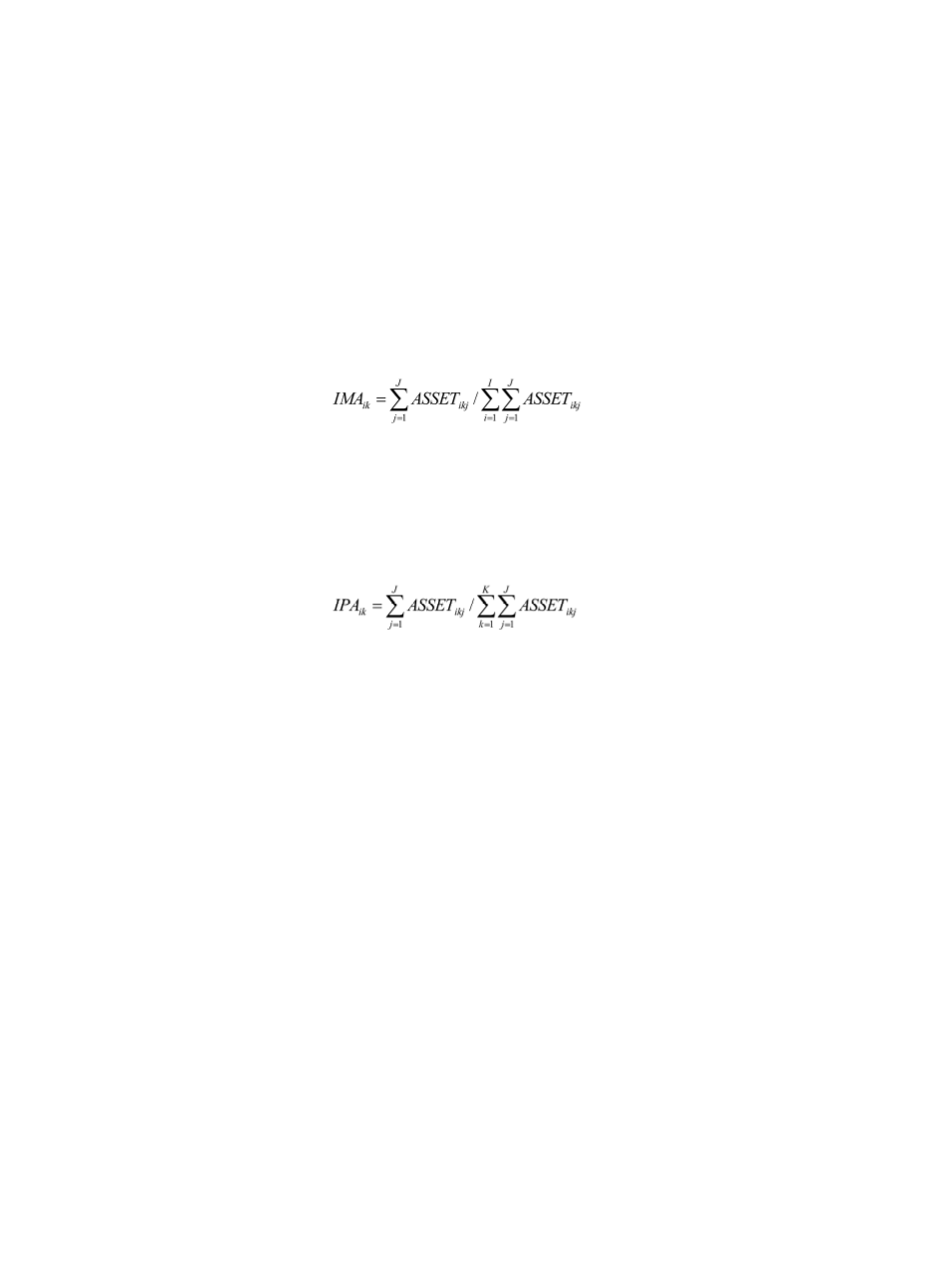

臺大管理論叢
第
26
卷第
2
期
25
4.4.2 Alternative Measure of Auditor Industry Expertise
This study investigates whether our results are sensitive to the measure of auditor
industry expertise used. Prior studies also use clients’ assets to calculate auditors’ market
share and portfolio share (Dunn and Mayhew, 2004; Chen et al., 2007). This study uses
alternative measures
IMA
and
IPA
to proxy auditor industry expertise.
IMA
and
IPA
are
calculated as follows:
where
ASSET
is clients’ total assets and the numerator is the sum of assets of all
J
ik
clients of audit firm
i
in industry
k
. The denominator is the assets of
J
ik
clients in industry
k
summed over all
I
k
audit firms in the sample with clients (
J
ik
) in industry
k
.
where
ASSET
is clients’ total assets and the numerator is the sum of the assets of all
J
ik
clients of audit firm
i
in industry
k
. The denominator is assets of all clients of audit firm
i
summed over all
k
industries.
The difference between
IMA
(
IPA
) and
IMS
(
IPS
) is clients’ sales revenue is replaced by
asset, so the calculation of
IMA
(
IPA
) is similar to
IMS
(
IPS
). Table 10 reports the regression
results of newly-defined auditor industry expertise (
IMA
and
IPA
) on tax avoidance (
BETR
,
CETR
and
BTD
). The coefficient of key independent variable (
Spec
) is still negative and
significant at 1% level in Model (1) and Model (2), and positive and significant at 1% level
in Model (3). These results confirm the positive association between auditor industry
expertise and tax avoidance. The coefficient of interactive variables is similar to our early
finding in Table 9.
Spec
*
Fee
and
Spec
*
Tenure
are negatively associated with efficient tax
rate (
BETR
and
CETR
) and negatively associated with book-tax difference (
BTD
) in most of
these regressions.
Taken together, our results are qualitatively unchanged when we repeat the analyses
using the alternative measure of auditor industry expertise.


















